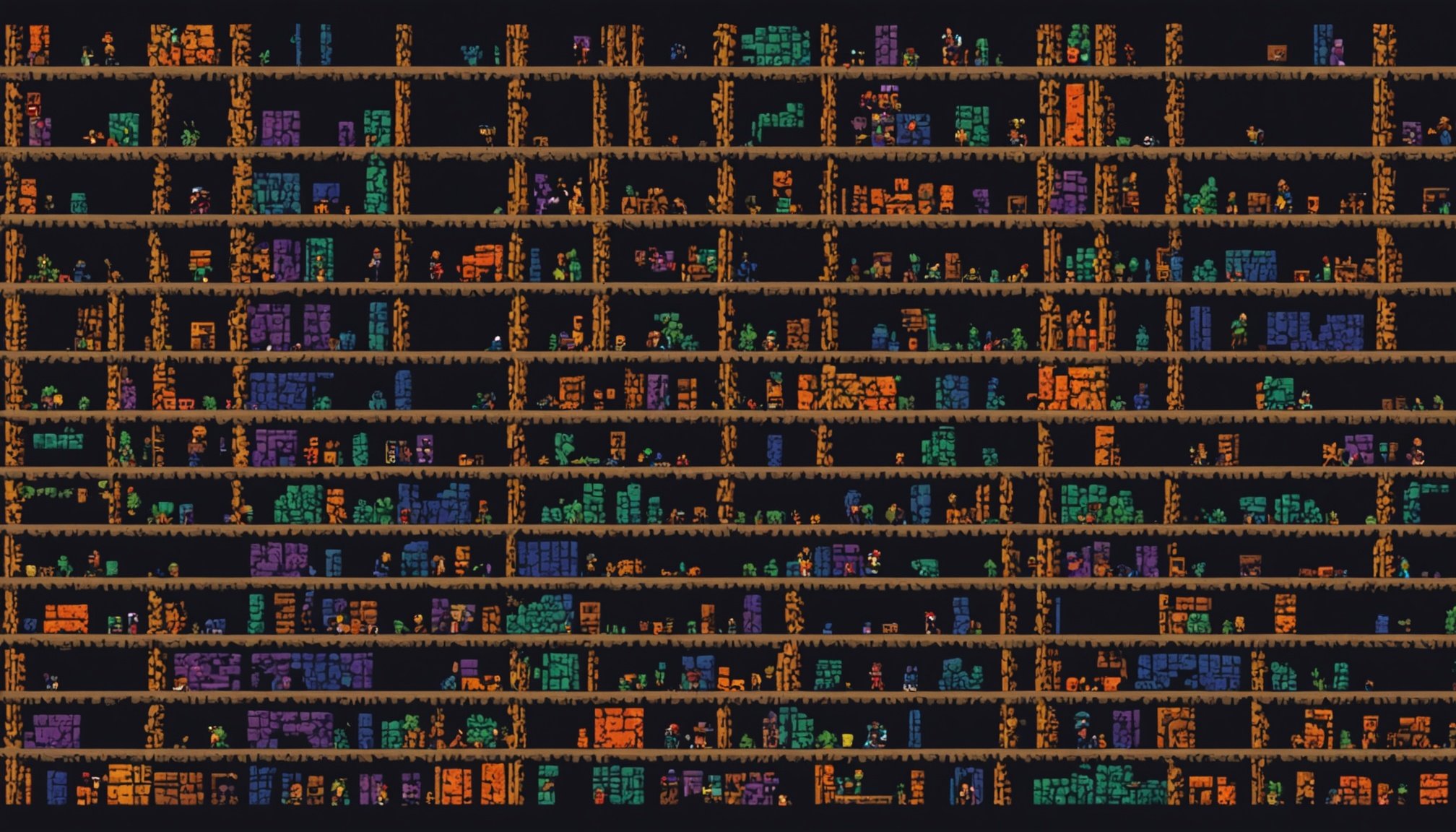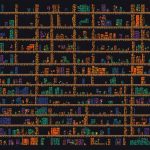Understanding Procedural Generation in Roguelike Games
Procedural Generation is a game design principle where algorithms are used to generate content dynamically, rather than manually creating each element. This method is significant as it offers endless permutations for game worlds, making each playthrough unique and engaging. This is a fundamental aspect in Roguelike Games, as these games heavily rely on procedural generation to shape their vast, unpredictable environments.
Roguelike Games are known for their challenging mechanics, permadeath, and randomly generated levels and items. These elements ensure that players must adapt their strategies every time they play, providing a fresh experience with each session. Procedural generation in these games not only maintains novelty but also significantly reduces development time compared to hand-designing each level.
Topic to read : Empowering developers: innovative blockchain solutions to prevent cheating in online multiplayer games
The key characteristics that set Roguelikes apart from other genres include:
- Randomness: Levels and item placements are different in every play.
- Permanent Death: When a player dies, they must restart from the beginning.
- Complexity and Strategy: These games often require a deep understanding of mechanics to succeed.
This integration of procedural generation highlights how Roguelike Games can be both challenging and endlessly replayable.
Also read : Endless urban horizons: harnessing procedural generation in the development of city-building games
Machine Learning Technologies in Game Design
In the realm of game development, machine learning has become a transformative force, shaping the way games are both developed and experienced. Various AI in gaming techniques have significantly enhanced player experiences, offering more dynamic and responsive gaming worlds.
One key implementation of machine learning involves procedural content generation, where algorithms can create elements such as landscapes or levels autonomously. This not only saves time for developers but also ensures each player’s journey is unique. Additionally, reinforcement learning allows non-player characters (NPCs) to adapt to player behaviour. This creates truly interactive environments where NPCs change tactics based on player actions.
Case studies from leading studios demonstrate the potential of these technologies. For example, in “No Man’s Sky,” procedural generation is utilized to produce vast, explorative universes. Similarly, “Left 4 Dead” leverages machine learning to modify the game’s difficulty on the fly, tailoring tension and challenge to keep players engaged.
The future of AI-driven algorithms in game design holds immense potential. As technology advances, games could evolve to offer richer narratives and more lifelike worlds, bringing forth new levels of immersion and creativity beyond what was previously conceivable.
Methodologies for Implementing Machine Learning in Level Design
Implementing machine learning methodologies in level design can revolutionise the development process, with procedural innovation playing a key role. By incorporating machine learning, developers can create dynamic and engaging experiences for players.
Step-by-step Guide
To effectively integrate machine learning into level design, a structured approach is crucial. Start by selecting appropriate level design strategies to guide your process. Next, choose specialised tools and technologies that align with your objectives, such as Unity ML-Agents or TensorFlow. These platforms provide the necessary resources for developing machine learning-driven environments. Implement best practices, like training models with diverse datasets, to optimise the level design for predictability and creativity.
Frameworks and Algorithms
When considering frameworks and algorithms, machine learning offers innovative solutions over traditional methods. Using frameworks like OpenAI Gym can enhance procedural innovation, creating environments that adapt and evolve. Successful examples, such as the procedural generation in ‘No Man’s Sky’, showcase the potential of these algorithms.
Challenges and Solutions
Despite the potential benefits, challenges such as computational complexity can hinder progress. Overcome these obstacles by employing strategies like simplifying models and using parallel processing. Stay informed on future trends to continually adapt and refine your machine learning methodologies in level design.
Impact on Player Experience
In the realm of gaming, the fusion of procedural generation and player interaction has significantly reshaped user engagement. When players encounter procedurally generated game mechanics, the variety and novelty can enhance satisfaction, keeping them invested longer in the gameplay. Case studies involving machine-generated levels reveal mixed feedback from users. While some appreciate the unpredictability and fresh experiences, others may find the randomness detracts from comprehension and enjoyment.
To balance this, game developers often strategically incorporate randomness without sacrificing player comprehension. A well-tuned procedural system should maintain a sense of consistency and logic, allowing players to feel both challenged and rewarded. While total randomness can overwhelm or confuse, carefully curated elements can promote a positive engagement.
Ultimately, striking the right balance involves iterative testing and refinement, often guided by direct player feedback. When players are part of this interactive design process, their satisfaction and connection to the game deepen, underlining the significant impact procedural generation has on the overall player experience. Player feedback thus becomes paramount in refining these game mechanics to ensure a harmonious balance between novelty and clarity.
Expert Insights and Research Findings
Understanding the future of machine learning in gaming involves delving into both industry insights and game development research. Renowned industry experts predict profound changes. In interviews, they reveal that procedural generation, a technique heavily used in game design, is poised for transformation. Expert commentary highlights how machine learning can enhance complex games, leading to more immersive experiences. Imagine games that adapt to your play style—it’s becoming a reality.
Academic research into procedural generation shows promising results. Studies indicate algorithms are evolving, creating richer and more diverse game worlds. These key findings suggest a significant leap forward, altering the landscape of game development. The focus is on improving player interaction and personalisation through data analysis.
Predictions about the future of roguelikes are especially illuminating. As procedural systems grow more intricate, these games could achieve new heights of innovation. Experts believe machine learning can refine difficulty levels and narratives dynamically. This evolution merges technology and creativity. With the right tools, developers anticipate crafting games offering endless, unique experiences, shaping the future of gaming.











